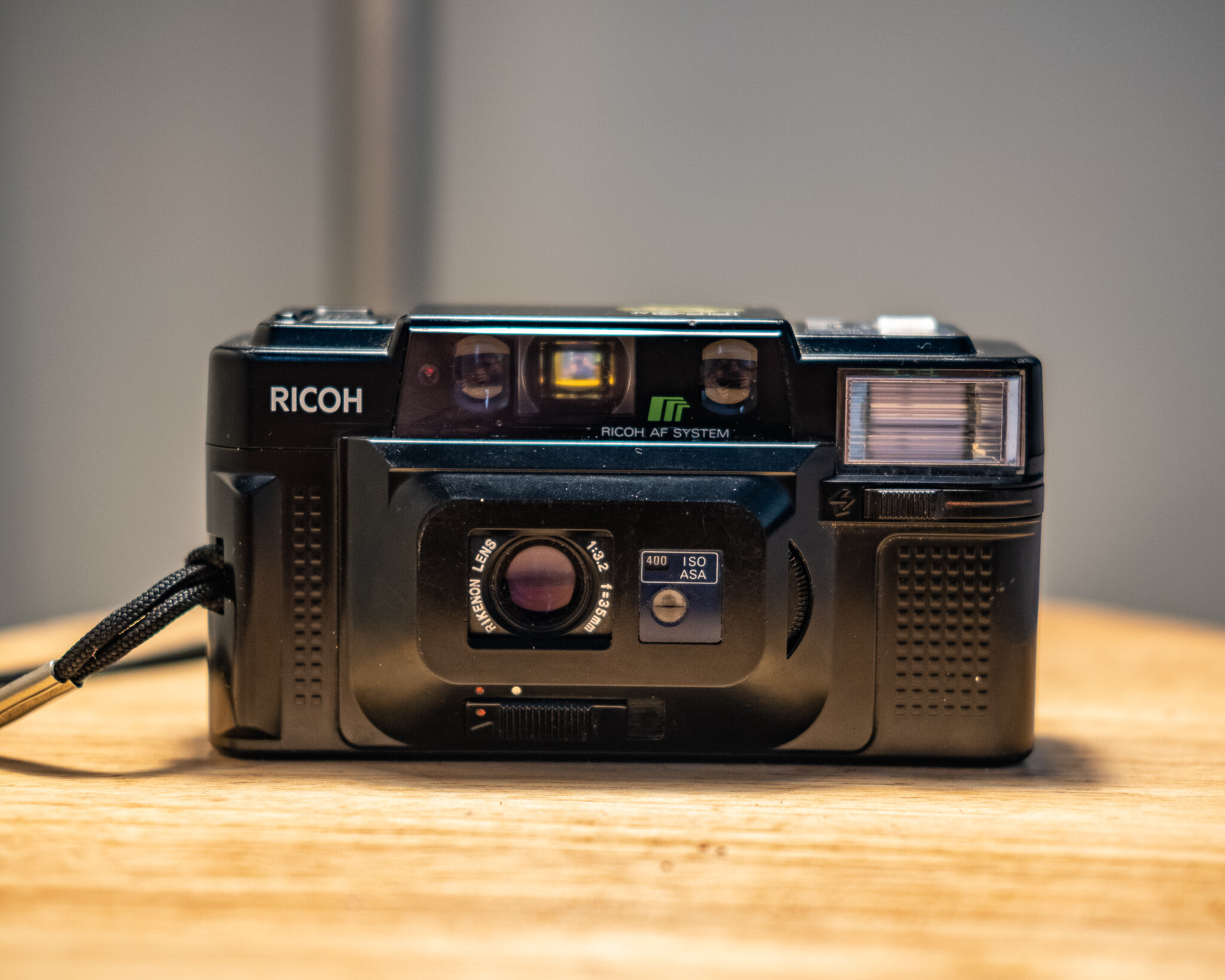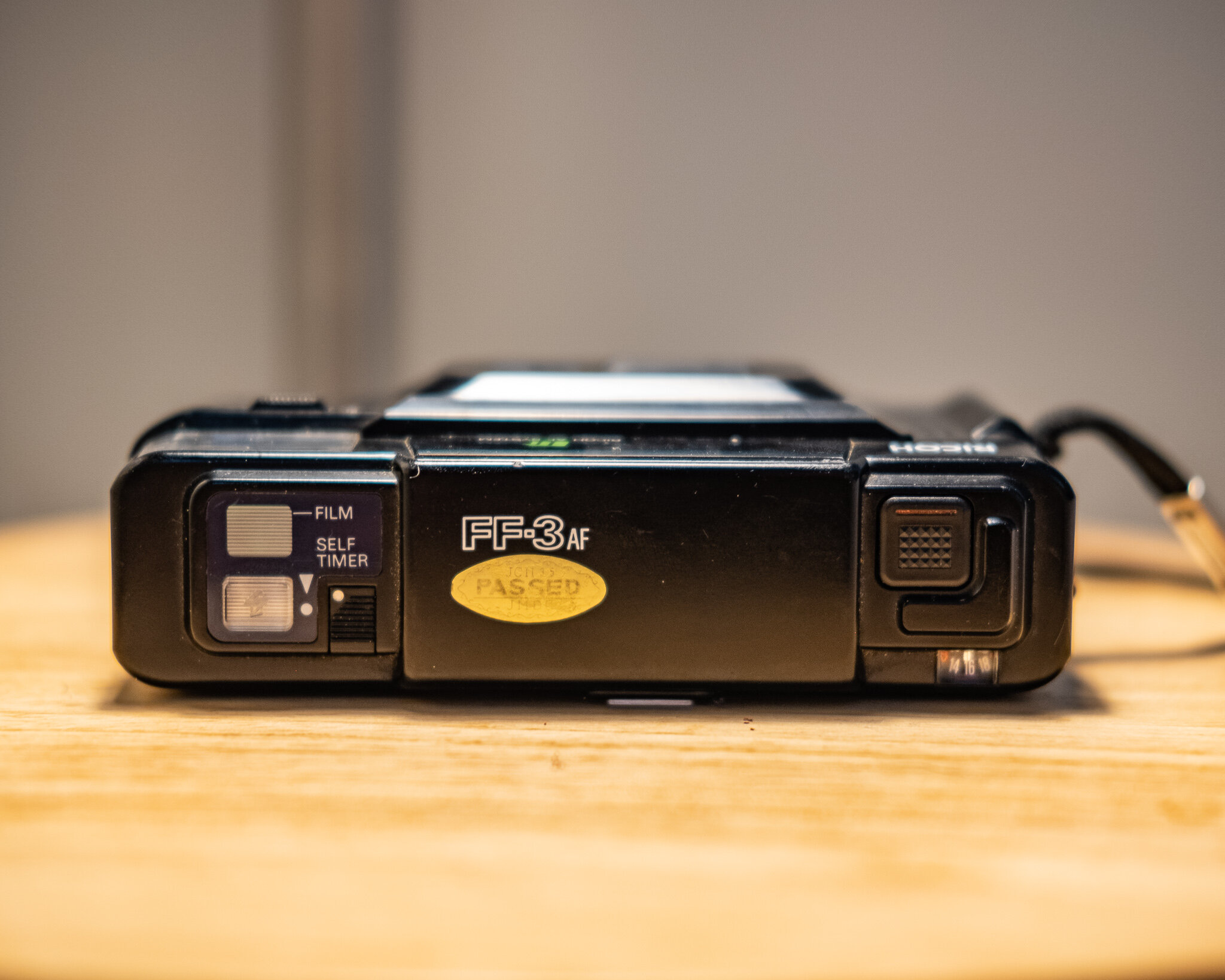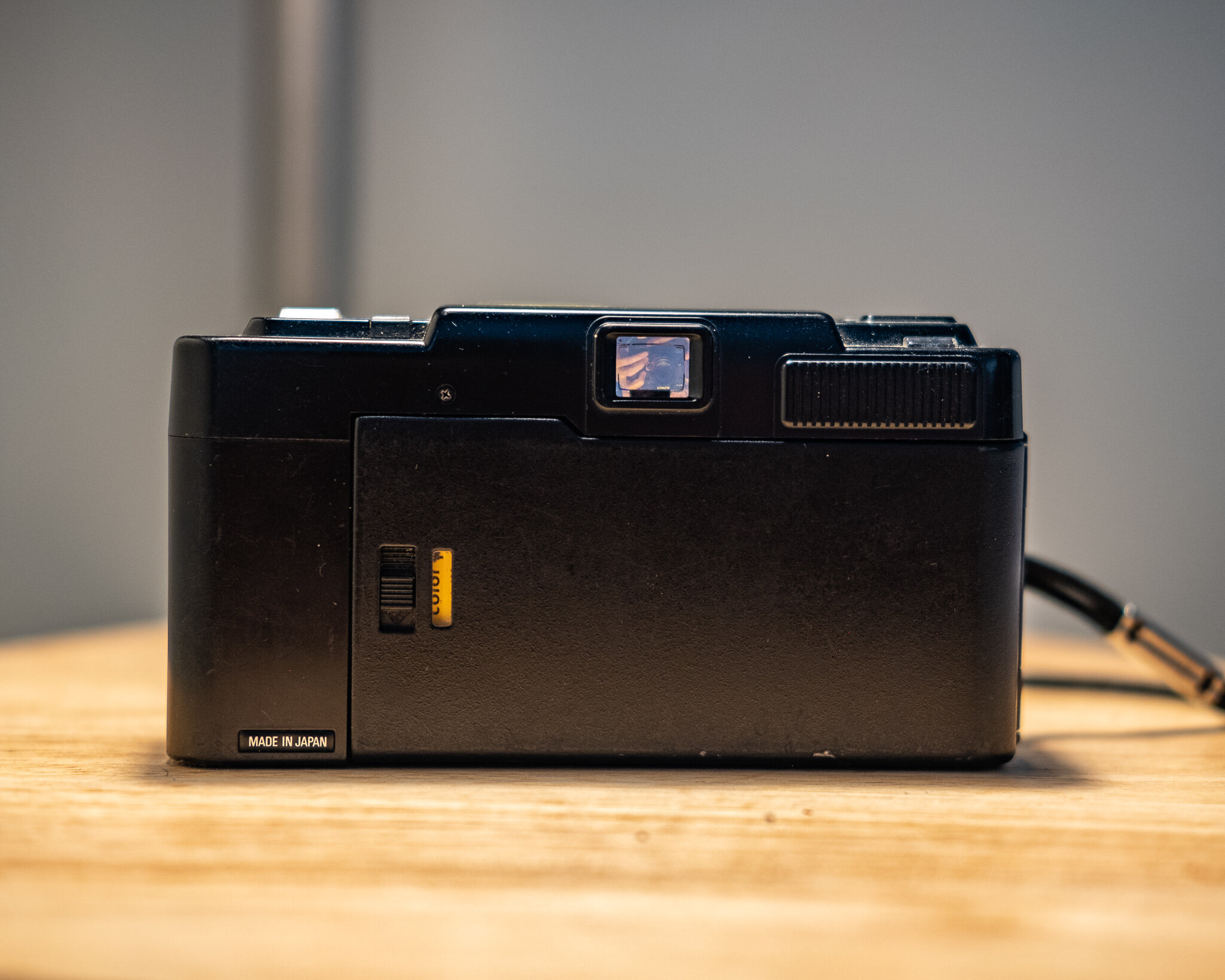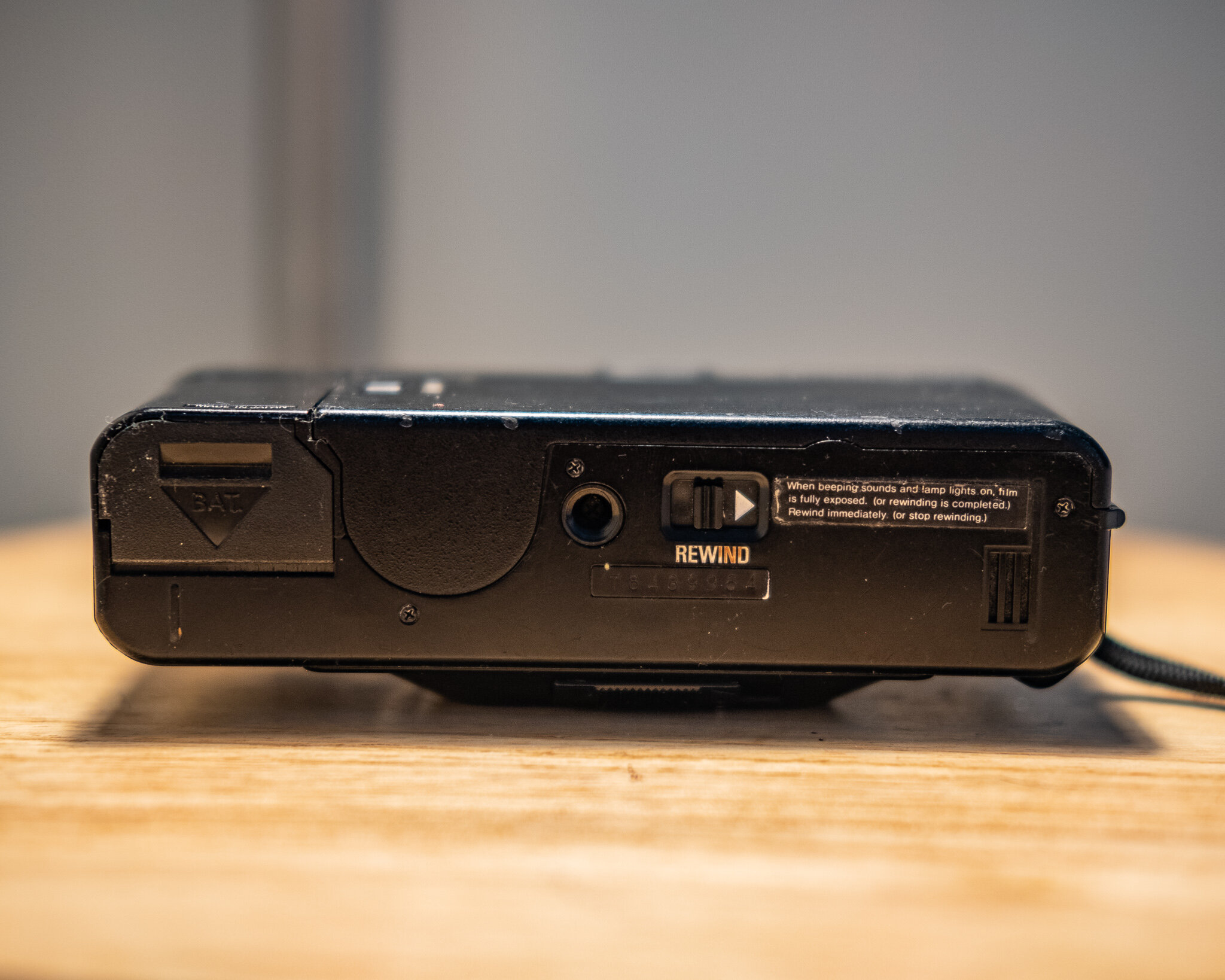Sometimes good things just drop into your lap. You’re sitting there, idly minding your own business, and suddenly, there it is. For me, the Ricoh FF-3 is one of those things.
I am a self admitted gear junkie. If you read my first post, you would know that I spend an excessive amount of time on the internet looking for cheap cameras, not because I have any sort of need for them, but rather a weird, constant curiosity. I am on a mission to find the perfect budget film point and shoot. I don’t mean an Olympus XA or a Stylus or any of their lot. Unfortunately, those have become cool, and have far exceeded the price I am willing to pay for a likely shitty piece of 30-40 year old plastic. So far, that mission hasn’t gotten me far. The closest I’ve come is the Minolta Freedom Tele, a fantastic shooter with a sharp lens, but just a bit too big to be considered. So the hunt continued.
Unwrapping my box of crap cams I bought from the Goodwill website, I had no real hopes for the contents. I bought the lot mostly for a Minolta AF Tele, a wonderful little dual focal length similar to the Minolta mentioned above. By the time I got around to looking at it closely, it turned out the battery compartment had severe corrosion, but I didn’t care. I had found something better.
I cant quite tell you the Ricoh FF-3 is a pocket camera. Maybe a large coat pocket, but you’re not slipping this guy into a pair of jeans without some significant outlining. The body is a chunky block with extremely 80s styling, resembling every car dashboard and sci-fi movie prop of the decade. As a side effect, its thick plastic body feels unbelievably sturdy in your hands, as far from the likes of the Nikon FunTouch as an old Lexus is from a Pontiac Sunfire. Not quite true luxury, but damn if it doesn’t feel good. And it should, as according to Ricoh’s Japanese site, the camera sold for ¥42,800 in Japan and $299 in the US in 1982, the equivalent of about $500-$700 US today. The ergonomics are spot on, with just the right amount of purchase and grip. The lens cover/on switch slides with a reassuring amount of force and a satisfying click. The shutter button is placed just so, with a clever little raised area for your finger to rest on as you press it down. AND THE FLASH. A dedicated flash on/off switch that actually defaults to off, perfect for street shooters. No more forgetting to set the camera and firing off flash in your unsuspecting subject’s face, disturbing everyone around you during a concert, or ruining your vision for a dark silhouette. Also included are a self timer, automatic wind and rewind, and a manually set film speed dial from 25-1000.
So, what’s it like to use? In a word, brilliant. My first day with it I tossed in a couple AAs, loaded up a roll of Kodak Ultramax 400 and headed out the door, walking the streets slowly as the sun approached golden hour. It was an instant pleasure to use. The 35mm focal length and bright viewfinder made composing a breeze. Within that viewfinder, 3 symbols give you an idea of where your focus is, and another flashes if the camera suggests you use flash. However, as I said, this is just a suggestion, and without your input, the flash will sit idle. The camera fit just so into my hand, carrying comfortably with an extra boost of confidence from the well integrated wrist strap. In an hour I shot about half a roll, reveling in each shot as the shutter button confidently depressed into the body. As with most all vintage compacts, it attracts little to no attention, allowing you to move unnoticed and lending some much needed confidence for street portraiture. The only real detractor from making the FF3 a perfect street setup is the noisy film advance, though this is pretty much standard for cameras like this.
Upon receiving the photos back from the lab, I was nothing short of blown away. Metering seemed to always be spot on, with beautiful color reproduction. Everything is sharp and contrasty, managing to perform well even in low light situations. The camera seems happy to open up the aperture, even in more well lit scenes, compensating with a faster shutter and resulting in some light but pleasing bokeh. I was surprised to see how well it handled the varied conditions I threw at it, from midday sun to mist to city lights. Nothing seemed to faze it, and I honestly think it created better exposures than I would have come up with had control been given to me. I looked through these and instantly slid the camera back in my pocket with a fresh roll of film. With results like this, the little Ricoh has earned itself a well deserved spot in my roster.
Here we are then, we made it. After buying many copies of crappy little point and shoots in pursuit of finding a lost gem, I have it. A largely forgotten camera, made by a company not quite famous yet, flying under the radar of its younger brothers. I sought to find something at least a little as good as much hyped cameras like the Olympus Infinity or the Yashicas, and in some respects, I might have gotten something better.
Thanks for reading, if you liked this review, please leave a comment, check out my other writing or photographic work, or find me on Instagram @willwanderphotography.















